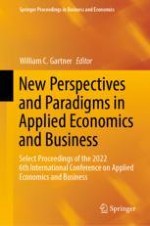2023 | OriginalPaper | Buchkapitel
Game Theory in Outlets—How Should Stores Maximise Profit?
verfasst von : Zhenning Li
Erschienen in: New Perspectives and Paradigms in Applied Economics and Business
Aktivieren Sie unsere intelligente Suche, um passende Fachinhalte oder Patente zu finden.
Wählen Sie Textabschnitte aus um mit Künstlicher Intelligenz passenden Patente zu finden. powered by
Markieren Sie Textabschnitte, um KI-gestützt weitere passende Inhalte zu finden. powered by
